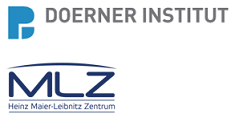Speaker
Description
Activation analyses with neutrons provide a unique combination of advantages. The panoramic analysis of the elemental composition is flexible regarding the sample matrix, it is non-destructive, highly sensitive and reliable. Prompt gamma activation analysis (PGAA) and instrumental neutron activation analysis (INAA) are the classic methods in this field and are established in archaeometry. For instance, they can be applied for provenance analyses, authenticity investigations or conservation-restauration research. PGAA and INAA are complementary offering accurate determination of a broad circle of elements. FRM II provides unique irradiation conditions for these methods, i.e. highly thermalized positions near the reactor core and high-flux cold neutron beams. At MLZ we are continuously developing and planning new instrumentation for elemental analysis. Prompt gamma activation imaging combined with cold neutron tomography (PGAI/NT) enables the spatially resolved analysis of medium-sized artifacts (in cm range). This also makes it possible to examine composition and structure inside an object in a completely non-destructive way. A recent development is the so-called in-beam cyclic neutron activation analysis, which is of interest in the analyses of lead- and silver-containing metal objects. One of the advantages of this approach is that the residual activity of the samples will be significantly lower than for the classic methods facilitating a quick radiation protection clearance after the irradiation. It also allows the determination of trace element concentration in the sample bulk, which is often challenging with other methods. In our talk we will present the possibilities of activation analysis at MLZ, with a focus on archaeometric applications.

